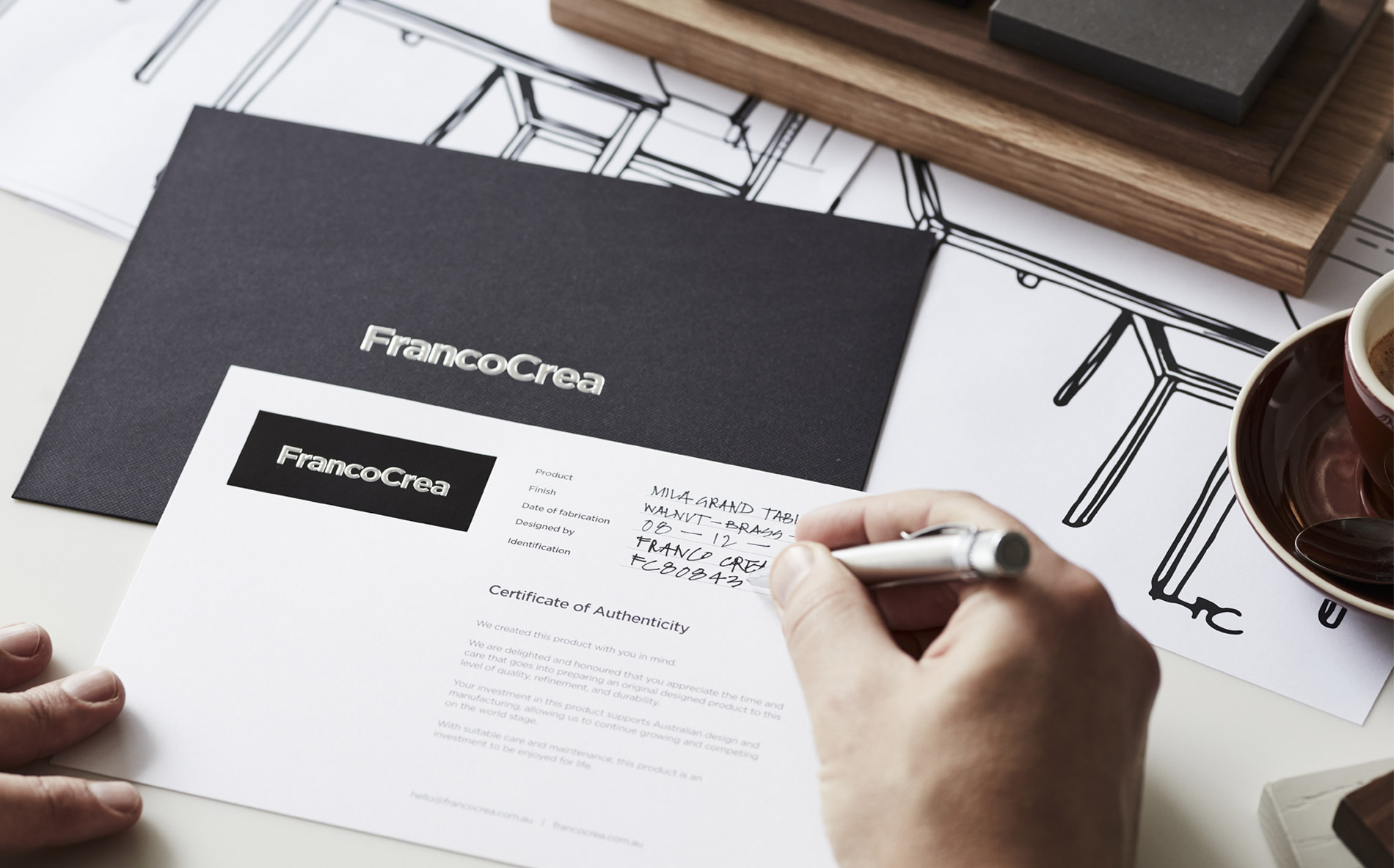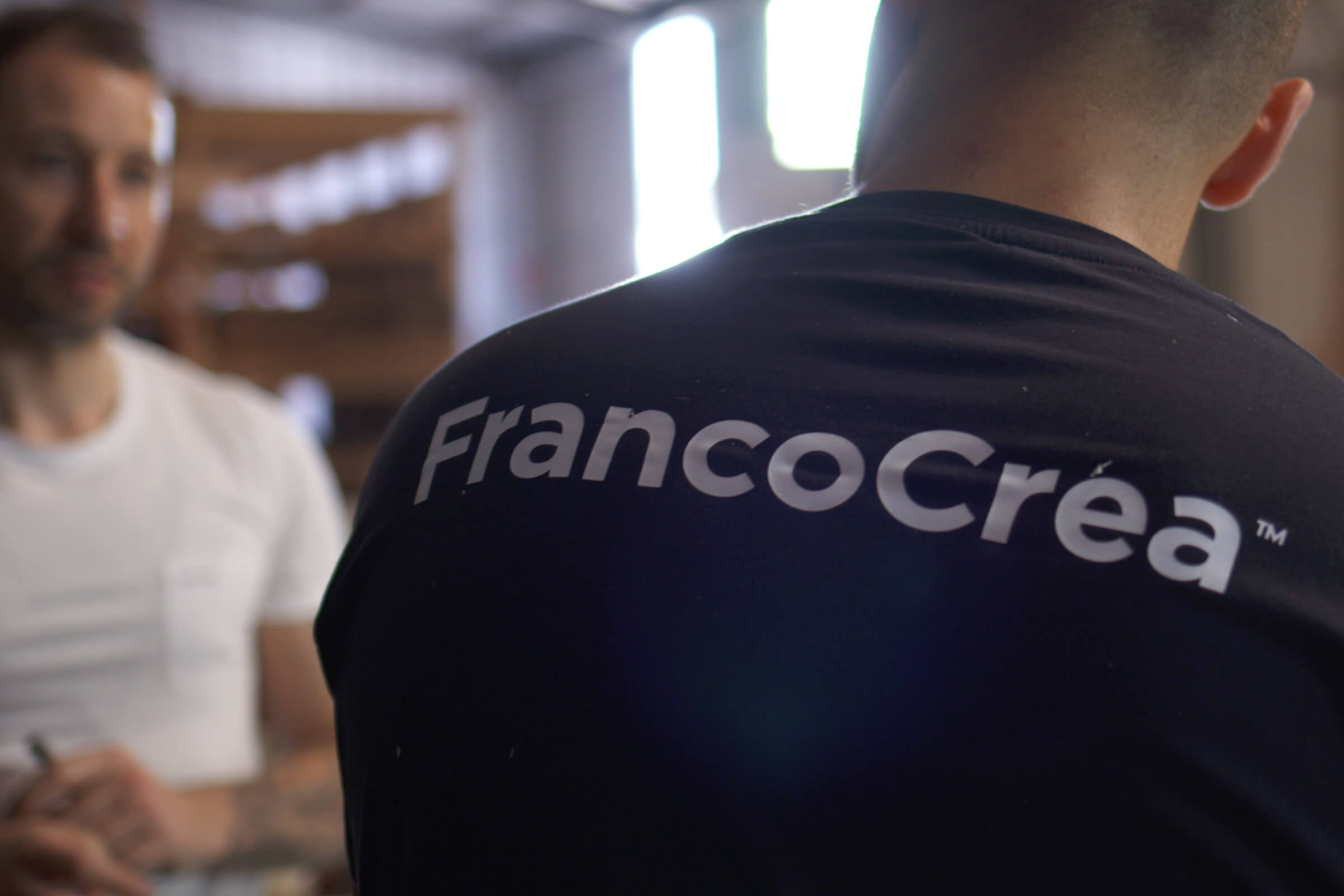Spotting Fakes

Replica's are fake
In a world of replica and knock-off furniture we strive to celebrate originality and authenticity with each of our designs.
Owning a piece of original design is a completely different mindset from mass-produced fast furniture. It is an opportunity to own a piece of history similar to buying an authentic painting for your home or a watch for your wrist. Each original design has its own unique story and history from its creator and becomes more than just a trendy sofa to flop on. You get to be part of that story and it’s history yet to be written.
We have recently partnered with the Authentic Design Alliance in an effort to help provide education on the difference between authentic furniture and fake replica furniture to the broader Australian community.

Discover authentic Australian furniture
Thank you for your enquiry.
We will be in touch as soon as possible.



Authentic Design Alliance
The Authentic Design Alliance is a social enterprise shedding light on counterfeit design and the subsequent design theft from original and often independent designers. Working with government agencies, the ADA aims to create awareness about the damage caused by the fast furniture replica industry.
The ADA also works to change intellectual property legislation to further protect the products of independent designers from being copied. The long-term vision is to see the replica industry criminalised in line with Europe and the UK.



Replica Knockoff Counterfeit
So what is replica furniture you ask? Replica is knockoff/counterfeit furniture that resembles or directly copies authentic furniture and is made by a company that is not authorised to do so. These are the same tactics used in the fashion industry where fake handbags are made to mimic the real thing and sold unknowingly to consumers.
Counterfeit/replica furniture is deliberately deceitful, aiming commonly to confuse consumers and fooling them into thinking they are buying the same thing as the original authentic version. Lesser in so many ways, from cutting corners on quality of materials and concealed construction methods, to unethical and unsafe working conditions for workers. In some instances, the substituted lesser-quality materials may even be toxic.
Discover authentic Australian furniture
Thank you for your enquiry.
We will be in touch as soon as possible.



What to look for
It’s upsetting when a buyer realises they have been duped. So what can you do to safeguard being taken advantage of?
6 tips to avoid fake furniture.
-
When you see a piece you love, find out who the actual designer is, their history and journey. Where are their pieces produced and who is authorised to sell their designs. Does the designer only sell directly to clients or have they authorised a re-seller through a license agreement to sell their pieces. If you’re ever in doubt about who is an authorised re-seller, go to the designer’s website where they should list the authorised re-sellers. Alternatively, connect with the original designer to confirm directly.
-
When looking online for authentic furniture pieces, these are potential fraudulent practices to be mindful of. Sometimes the image of the piece will give away clues it is not an original. There will be subtle differences in stitching or perhaps the pieces are offered in colours not available by the original designer for example. Other times unethical websites will steal a photo from the designer’s website, re-use the image on their website, and then ship a counterfeit fake version to the unknowing buyer. Invest a small portion of time to research the original designer’s website to familiarise yourself well with the piece you want to buy. This will make it easier to spot a replica when things look a little bit wrong or the seller isn’t listed as authorised.
-
Ensure the piece can be verified with a certificate of authenticity that correlates to an identification number registry held by the original designer. Each designer piece should have a ‘makers mark’ in the form of a nameplate, heat stamp or carved insignia.
-
Check if the seller is transparent with what materials the design is made from or if this is conveniently left off. Is a detailed description of the materials used provided or is it deliberately lacking detail? For example, the piece may be described as ‘walnut’ and not disclosed it is a ‘walnut stain’ not genuine solid walnut wood. These types of practices can lead you to believe you are getting the real deal solid walnut wood when in fact you are getting a cheaper wood stained to look like a walnut colour.
-
The old saying, ‘if the price looks too good to be true, it probably is’, is very much applicable here. Occasionally designers may place items on sale. However, if the item is shown at half its regular price or as low as a tenth of the normal price, that piece is more than likely not authentic.
-
Finally, listed here below is terminology used that is often a give away you aren’t buying the real thing.
- ‘Frequently attributed to’
- ‘In the style of’
- ‘Commonly mistaken for’
- ‘Inspired by’
- ‘Reproduction’
- ‘Replica’
Discover authentic Australian furniture
Thank you for your enquiry.
We will be in touch as soon as possible.



Learn More
As a team of local designers, we are always more than happy to share our knowledge and provide guidance on what to look out for.
We welcome you to visit us in one of our studio showrooms to learn more and ask questions. If you live outside Melbourne or Adelaide, we often help clients interstate via phone or email and can easily coordinate a Facetime or zoom call.
They say knowledge is power, and we’re happy to share our decades of experience.
Flaghsip Melbourne studio showroom
259 Swan Street, Richmond, Victoria 3121
Flagship Adelaide studio showroom
442 Pulteney Street, Adelaide, South Australia 5000
